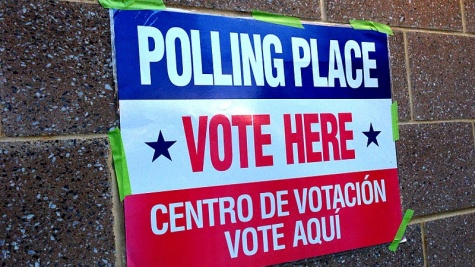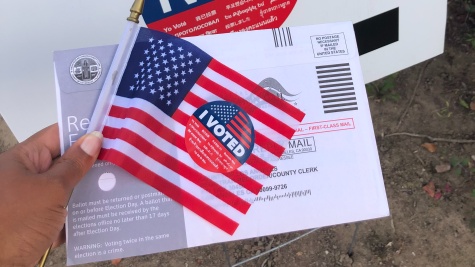Evaluating the Impact of Drop Boxes on Voter Turnout
The MIT Election Data and Science Lab helps highlight new research and interesting ideas in election science, and is a proud co-sponsor of the Election Sciences, Reform, & Administration Conference (ESRA).
William McGuire, Benjamin Gonzalez O’Brien, Katherine Baird, Benjamin Corbett, and Loren Collingwood recently presented a paper at the 2018 ESRA conference entitled, “Evaluating the Impact of Drop Boxes on Voter Turnout.” Here, they summarize their analysis from that paper. (Please note that the results discussed below are preliminary — please do not cite or distribute further without permission of the authors.)
While the effect of vote-by-mail (VBM) provisions on voter turnout has been studied extensively, little research exists on the impact of providing citizens in these jurisdictions with the alternative option of voting via drop boxes. Drop boxes are large, secure boxes where voters can drop off their ballots in person instead of mailing them in.
All VBM states (currently Washington, Colorado and Oregon) require some provision be made for voting via drop boxes, and experience with these boxes shows that many voters choose to use them over mailing their ballots. In Washington State, for instance, 57 percent of the 3.4 million votes cast in the 2016 general election were placed in one of the state’s 314 drop boxes. In this study, we examine the causal effect of drop boxes to determine whether the distance to the nearest drop box influences voter turnout.
In 2017, election officials in Pierce County, Washington identified six sites as potential locations for a new drop box. According to county officials, all six sites had equally strong cases for a new box based on nearby residents’ proximity to other drop boxes and turnout rates in the surrounding community. Yet the county only had resources to install boxes in five of the six locations.
Working with county election officials, we randomly selected one site out of the six possible locations that would not receive a new drop box for the 2017 general election. This unselected site became our “Placebo” location, with the other five making up our “Treatment” locations. This experimental design—where voters near the Placebo location serve as a control to those near the Treatment locations — allows us to assess the voting behavior of individuals served by the five new drop boxes by comparing it turnout in the Placebo group.
To identify individuals in our Treatment and Placebo groups, we first calculated the distance between every Pierce County voter’s home address and each of the county’s 35 ballot drop boxes, plus the one Placebo drop box. (These distances are calculated “as the crow flies;” we also note that the process overall maintained the assumption that individuals interact with the ballot drop box closest to their home address. This may not be the case for every voter, however, and is an important question for future study.) If a voter’s nearest drop box in 2017 was one of the five new boxes installed during the expansion, they were assigned to the Treatment group. They were assigned to the Placebo group if their closest drop box would have been the “Placebo” box we randomly chose not to be installed.
In total, we identified 55,835 voters who lived closest to one of the five new drop boxes in Pierce — they formed our “Treatment” group. We identified 10,607 voters as being closest to the Placebo box; this group became our set of “Control” voters. Individuals in the Treatment group were on average 1.32 miles closer to a drop box in 2017 than they had been in 2016.
Using a linear probability model, we find a positive, if small, effect overall for the expansion of drop boxes in Pierce County. For those in the Treatment group, decreasing their distance to the nearest drop box by 1.32 miles resulted in a .56 percentage increase in their likelihood of voting. The average untreated voter in our simulation had a 25.8 percent probability of voting; once we place everyone 1.32 miles closer to a drop box, we predict that the probability of voting (or alternatively, turnout for the group as a whole) would rise to 26.3 percent.
By age, we see an increase in turnout among all age groups, with the smallest effect for those in the 32–43 age range. By income, we see increases in every income quintile except the second highest bracket. We see similar increases in turnout for both men and women. Finally, we see significant increases in turnout for every ethnic/racial group except those from East and South Asia, with the new drop boxes causing particularly large increases in turnout among black voters in the Treatment group.
These findings, when paired with the similarly positive effect we found for the expansion of drop boxes in King County, Washington, show that decreasing a voter’s distance to their nearest drop box increases their likelihood of voting. These effects do seem to be strongest in non-presidential elections, and the demographic effects vary based on the characteristics of a county. In King County, for example, the increase in boxes largely increased turnout among high propensity groups, while in Pierce we find positive and significant effect for low-income and minority voters.


